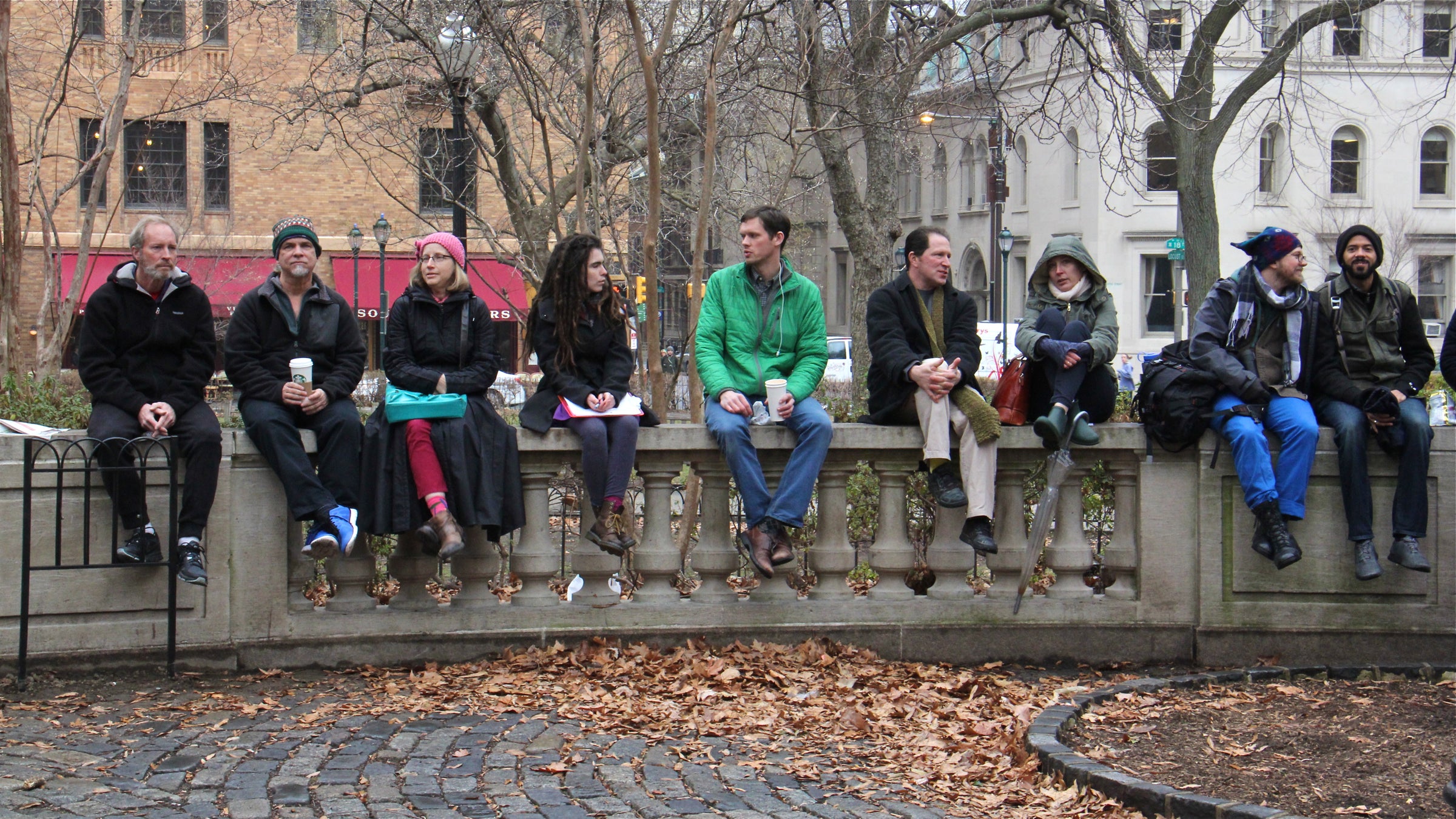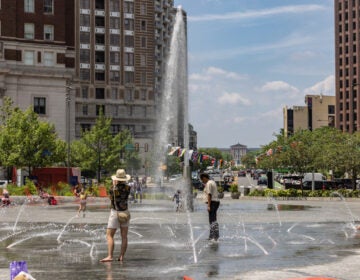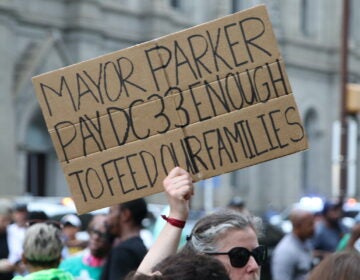Rittenhouse rule off-the-wall, says Kenney, but reversal not sitting well with neighbors
Listen
Rittenhouse Square wall-sitters celebrate the end of a brief ban with a lunch-time sit-in. (Emma Lee/WHYY)
Philadelphia retired nurse Ursula Karau counts herself among those who fancy Rittenhouse Square’s 3-foot-tall concrete walls more than the park’s rows of benches. Karau and so many others have congregated along the walls in the well-to-do section of the city for generations.
“People play chess. They kiss one another. They make love sitting on the wall. It’s wonderful,” said Karau, who came out to celebrate Mayor Jim Kenney’s decision to reverse a new rule against sitting on the walls. The event was billed “Sittenhouse,” and about 100 people showed up despite the overcast forecast and intermittent rain drops.
The ban was triggered after Rittenhouse residents complained of loiterers and pot-smokers among the wall-sitters. They said they didn’t want to see all they invested into park repairs to be set back by what they viewed as a surge of vandals and litterers. When the neighbors requested a prohibition on using the park’s walls as a perch, the city agreed.
That pleased Rittenhouse resident Richard Branton.
“What’s so magical about sitting on the wall? It provides an opportunity for people with undesirable intentions to pass drugs,” he said.
Those kind of views sparked an outcry on social media. In response, the city quickly took down the no-sitting signs along the walls, and Mayor Kenney tweeted: Sit where you want.
Sachio Ko-yin applauded Kenney’s move, saying those who oppose wall-sitting are speaking in code.
“Not letting people sit on the balustrade, or wall, whatever you want to call it, is about race and social class. It’s something that was not expected to be noticed,” Ko-yin said. “A little tiny thing that’s a statement of who belongs here and who doesn’t.”
George Matysik with the Philadelphia Parks Alliance said activists have long applauded Rittenhouse Square’s urban melting-pot dynamic.
“You know,” Matysik said. “When Jane Jacobs wrote about this space back in the 1960s, she talked about the variety of uses behind the space. And, for any park, you want to be a real democratic space. And that’s what I think a lot of the folks here today are demonstrating.”
During the 1960s, Rittenhouse was ground zero for artists and anti-war activists who won a right to be there when a federal judge ruled that “it is not a crime to be a hippie.”
But area resident Vicky Bayle, who cited a shooting that occurred near the park in October that put the community on edge, said the wall-sitting ban needs to come back.
“It’s a good idea because we’re getting rid of the drugs and all of the hanging out here and smoking pot. That element was not always part of Rittenhouse Square,” she said.
“I’ve never seen drug dealers, and I’m here every other day,” replied Mina Smith-Segal, who had a sign draped around her neck reading, “Yes to wall-sitting. Yes to music, art and performance.”
Even after the mayor’s tweet, private guards hired by neighbors told me to get off the wall on Sunday. Those guards aren’t going away any time soon, according to the neighbors.
Smith-Segal said she hopes the private guards will respect Kenney’s word.
“It would be very dismal to have people not sitting,” she said. “It should be for the people.”
WHYY is your source for fact-based, in-depth journalism and information. As a nonprofit organization, we rely on financial support from readers like you. Please give today.




